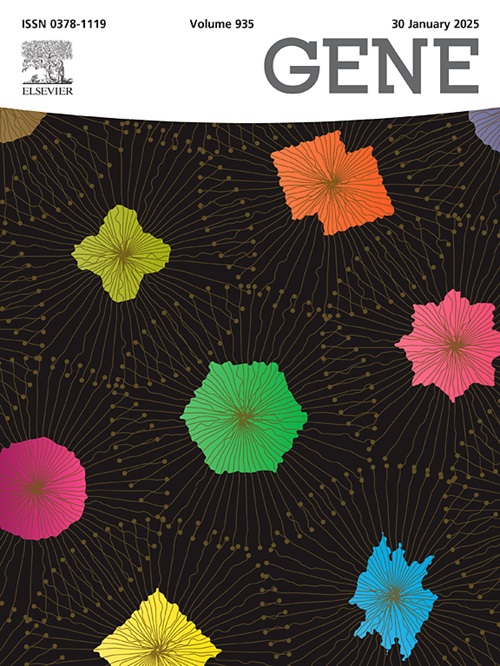washc5基因敲除斑马鱼的颌面、心血管和神经发育受到破坏:洞察 3C 综合征
IF 2.6
3区 生物学
Q2 GENETICS & HEREDITY
引用次数: 0
摘要
本文章由计算机程序翻译,如有差异,请以英文原文为准。
Disrupted maxillofacial, cardiovascular, and nervous development in washc5 knockout Zebrafish: Insights into 3C syndrome
3C syndrome features craniofacial, nervous, and cardiovascular malformations. WASHC5 gene mutations may underline this syndrome, but the pathogenicity and underlying mechanism remain undetermined. We analyzed the expression pattern of the washc5 gene in zebrafish using whole-body in situ hybridization and generated a zebrafish model with washc5 gene knockout using CRISPR/Cas9 technology. Homozygous zebrafish exhibited high mortality, retarded growth, lighter stripes, and reduced pigmentation around the pupils. In the maxillofacial region, homozygotes displayed a shortened and tilted maxilla and delayed ossification of bones. In the heart, homozygous zebrafish showed a decreased heart rate, increased ventricular area, disorganized ventricular muscle fibers, mitochondrial swelling, Golgi lysis, and endoplasmic reticulum (ER) lysis in ventricular myocytes. The mRNA levels of nppb and myh7 were significantly increased. In the nervous system, homozygotes displayed bradykinesia and impaired neuronal development. qRT-PCR analysis revealed downregulation of col1a2, col1a1a, col1a1b, sp7, and msx2b (osteogenic factors and regulators of maxillofacial skeletal development) and abnormal expression of alpk2, alpk3b, actc2 (cardiac development factors), as well as tsen54, exosc8, and exosc9 (cerebellar development factors). Enrichment analysis of differentially expressed genes and proteins indicated involvement in ER-related processes. The washc5 knockout zebrafish model exhibits phenotypic similarities to human 3C syndrome, suggesting that mutations of this gene may play a pathogenic role in the syndrome. The mechanism of the washc5 gene in 3C syndrome may be associated with disturbances in ER homeostasis, providing insights into potential gene therapy strategies.
求助全文
通过发布文献求助,成功后即可免费获取论文全文。
去求助
来源期刊

Gene
生物-遗传学
CiteScore
6.10
自引率
2.90%
发文量
718
审稿时长
42 days
期刊介绍:
Gene publishes papers that focus on the regulation, expression, function and evolution of genes in all biological contexts, including all prokaryotic and eukaryotic organisms, as well as viruses.
 求助内容:
求助内容: 应助结果提醒方式:
应助结果提醒方式:


